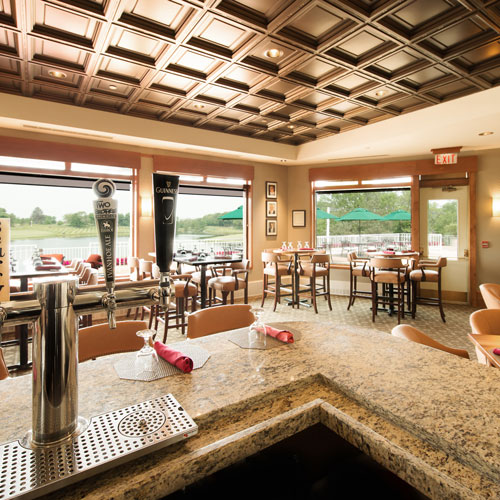Much has changed in the world of biomedical science since Alexander Kogan first joined Rockefeller University.
In the 20 years that Kogan, associate vice president of plant operations and housing, has been with the university, scientists have revealed our genetic blueprint through the human genome project, cloned a mammal from an adult sheep cell, and made breakthrough discoveries in stem cell research—along with a multitude of other scientific advancements. Rockefeller University, a private postgraduate and postdoctoral facility in the Upper East Side of Manhattan, has been integral to that mission. In the last two decades, scholars affiliated with the university have won five Nobel Prizes in the fields of physiology, medicine and chemistry, bringing the university’s total Nobel Prize count to 24, and fostering a climate of scientific exploration that’s recognized across the country.

Kogan’s team plays its part in that success. As science progresses, the plant operations department keeps pace by ensuring the Rockefeller campus, and its 77 laboratories, resource centers, and classrooms, are properly maintained and updated.
It’s a heavy task, Kogan says. Every lab has a unique, ambient environment with a temperature and humidity level that requires constant supervision. The facility’s emergency backup generators—which Kogan says can safely preserve lab samples that require freezing temperatures below -80 degrees Celsius for about six days—also need frequent monitoring. Perhaps most challenging, Kogan says, is contending with ever-changing equipment. As science advances, so does the technology that supports it.
“The labs need a lot more flexibility than they did the past,” he says. “Today, we build around a field of science rather than buying the same equipment for each lab. There’s a lot at stake.”
There are also sustainability challenges, Kogan says. To avoid the risk of cross-contamination, the air in Rockefeller’s laboratories can’t be recirculated. Consequently, Kogan must find other ways to be energy efficient, such as replacing old air conditioners with new, Energy Star-complaint models, and regulating thermostats when the university is closed. Both of these efforts helped Rockefeller University win the Association of Energy Engineers’ Institutional Energy Management of the Year award in 2015.
Even though many pieces of equipment advance and evolve over time, Kogan says those changing pieces must be balanced with structural equipment that doesn’t need to change with the times. Rockefeller’s central plant, which provides heating and cooling for the entire campus, as well as many of the residential facilities, allows the university to be “as self-sufficient and self-reliant as possible.” Nevertheless, as some of the equipment is more than a century old, preserving its integrity presents a unique set of challenges. Still, Kogan adds, it works.
“What’s unique about [Rockefeller] is the fact that we have equipment from the early 1990s that is operating, effectively, right next to equipment installed a year ago,” he says. “It’s really amazing to see both of those things properly maintained.”
Kogan is the first to admit that his is not a one-man show. The collaborative spirit of Rockefeller University is “what makes the place tick,” he says, and his executive peers—the AVPs of plant operations; planning and construction; research support; and director of security—as well as the cadre of engineers, electricians, plumbers, and carpenters he oversees, keep operations running smoothly.
“It’s an urban oasis, and it takes a village to keep it that way,” Kogan says. “There’s a sense of community, and a sense of pride, across the board. When someone wins a Nobel Prize, we all win a Nobel Prize. We’re one unit, and we do everything possible to support each other.”
River Campus Project
Rockefeller University’s Stavros Niarchos Foundation–David Rockefeller River Campus, colloquially called the “River Campus project,” launched in 2014 with two $75 million pledges from the Stavros Niarchos Foundation and David Rockefeller.

The project will add two acres and several buildings to the university’s existing 14-acre campus. The Marie-Josée and Henry R. Kravis Research Building, supported by a $100 million gift from the Marie-Josée and Henry R. Kravis Foundation earlier this year, will be the centerpiece of the River Campus, and is scheduled to finish construction in 2019. Built on the East River shoreline of FDR Drive on the Upper East Side of Manhattan, the two-story building will span almost three city blocks, providing 135,600 square feet of open floor plan space.
The central design idea is an open-concept building with labs and research spaces that have flexible infrastructure, and can easily be adapted to support future scientific advances, according to Kogan.
“The building is designed to be very modular,” he says. “As science changes in a year or two, it will be easy for us to modify, expand and do whatever the research calls for—a much quicker transition than ripping out the foundation and starting over.”
Like the rest of the facilities-based efforts at Rockefeller University, Kogan adds that the River Building project is a collaborative effort.
“We work as a team,” he says. “From the construction side to the administrative side, there are so many key roles in this project. We have a lot of support.”


